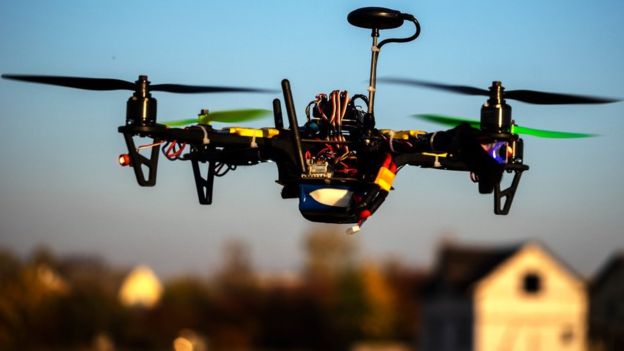We’ve seen over the last 48 hours the disruption that drones can cause – and frankly it’s surprising it’s taken this long for it to happen. The UK Airprox Board, which monitors air safety, says these incidents are on the rise: from 29 in 2015, to 71 in 2016, and 92 last year. Among those recorded are serious incidents like near misses with commercial aircrafts.
This is largely because drones are becoming increasingly common. Having matured as a technology in the last decade or so, one unintended consequence of the mobile phone explosion making computer components smaller, cheaper and more powerful is that we’ve also made possible a world where these small, unmanned aerial vehicles are affordable to consumers, and genuinely useful or transformative for a wide range of commercial and industrial applications.
So what can be done about it? And why could it be taking the authorities at Gatwick so long to get things back to normal? The big problem is that drones are almost uniquely hard to detect and disable. Detecting missiles is easy: they’re usually massive, they’re really hot, and they move in a broadly predictable direction. Drones, on the other hand, are small, capable of precise three dimensional movement, and can rapidly change direction and speed in the blink of an eye.
There are emerging new technologies being developed to tackle the problem, but it is unclear from reporting whether Gatwick has anything like it installed. Companies can today buy drone detection systems that will use cameras, microphones and radio detection technologies to look out for drones and potentially even jam the signals being sent to them, therefore hopefully preventing them from reaching their intended destinations or from being remotely controlled.
There is much being done in software too. DroneDNA is particularly clever – it uses new image recognition and machine learning technologies to attempt to match the incoming blob in the distance with a drone database, to give building managers a heads-up on what the drone might be capable of, and what it’s potential payload might be.
But this is still an emerging field and frankly, far from foolproof: even if a drone’s connection with its operator can be disrupted, it is conceivable that a drone could have its route pre-programmed ahead of time, and more advanced drones in the future could conceivably even navigate using on-board computer vision rather than GPS, meaning that jamming would make no difference.
So if it could be too late if drones are already in the field, the next question to ask is what can be done more broadly, in terms of policy, to prevent anything like what has happened at Gatwick from happening again?
It’s worth saying that the government has already been surprisingly proactive in this area. Most recently, at the end of July a new law came into force that gave some statutory oomph to the Civil Aviation Authority (CAA)’s ‘drone code’, which plays a similar role that the highway code does for cars.
The code itself is all fairly conservative, common-sense stuff. For example, it says that drones must be kept within line of sight of the pilot, and must remain at least 50m away from buildings at all times. The new law means anyone flying a drone into a restricted airspace – such as the area around airports – could receive a hefty fine or a prison sentence of up to five years. And from the end of next year there will effectively be a licensing system, with owners forced to register them with the Civil Aviation Authority and display a license number on the exterior of their drone.
The drone manufacturers themselves have also been keen to act as good citizens, perhaps out of fear of more heavy-handed regulation. For example, the major consumer drones, such as those manufactured by market leader DJI, now insist that users install new software updates before they are even allowed to take off. This means that the on-board database of restricted airspace can be kept up to date so that if the owner tries to fly someone where they shouldn’t, the drone will refuse to obey orders.
Problem solved? Perhaps in principle, but of course the reality is more complicated. Drones, after all, are essentially just flying computers, and in many cases are powered by the same Android operating system that is found in almost every non-Apple smartphone. And software as complex as an operating system like Android is vulnerable to hacking. Just as anyone with moderate computing skills can follow instructions to ‘jailbreak’ a phone to run unauthorised code, the same is and will continue to be true for drones, and this could make removing the barriers on accessing restricted airspace relatively straightforward for someone who is sufficiently determined.
Oh, and there is one last thing. These new controls follow a first wave of drones that were created and sold when drone regulation was essentially a wild west, meaning that there are potentially thousands of drones already out there which lack any software controls, and which are running ancient, easily hacked software and there’s absolutely nothing we can do about them. In other words the genie is already out of the bottle. Whoops.
James O’Malley is a tech journalist and was former editor of Gizmodo UK. He tweets at @Psythor.






Comments